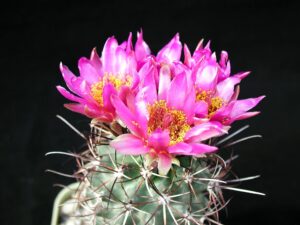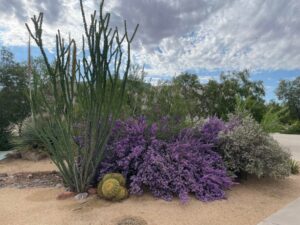When it comes to unique and visually striking plants, the Cereus cactus stands out as a true marvel of nature. These resilient succulents capture attention with their towering heights, exquisite blooms, and intriguing shapes. In this guide, we delve into the various types of Cereus cacti, exploring their distinguishing traits, ideal growing conditions, and the aesthetic appeal they bring to any environment.
The genus Cereus is marked by several notable species, many of which are native to the arid landscapes of South America. Each type of Cereus cactus possesses characteristics that make it appealing for both hobbyist gardeners and seasoned botanists alike. Understanding these plants can help cultivate not only a vibrant collection but also a connection to the world of desert flora.
Throughout this guide, we will examine three prominent types of Cereus cacti: Cereus peruvianus, Cereus repandus, and Cereus jamacaru. Each variety brings distinct visual allure and cultural significance, enriching our understanding of these enchanting succulents.
In the following sections, we will explore their origins, growth habits, and care requirements, ensuring that whether you’re a novice or an expert, you’ll find valuable insights to cultivate your own healthy Cereus collection.
Exploring Cereus peruvianus: The Blue Torch Cactus
Cereus peruvianus, commonly known as the Blue Torch cactus, is perhaps the most recognized member of the genus. This species is named for its striking bluish-green color, which gives it a unique and desirable presence in any succulent arrangement. The Blue Torch cactus has a tall, columnar shape, often reaching heights of up to 10 feet when cultivated under optimal conditions. It features prominent, vertical ribs that enhance its distinct silhouette.
The intriguing characteristic of the Blue Torch cactus is its ability to produce stunning nocturnal blooms. These flowers, which can measure up to 12 inches in diameter, unfurl at night, releasing an intoxicating fragrance that attracts nocturnal pollinators such as moths. The sight of these ethereal white or cream-colored blossoms against the backdrop of a moonlit garden is nothing short of breathtaking, solidifying the appeal of this species.
In terms of cultivation, the Blue Torch cactus thrives best in well-draining soil and requires ample sunlight to develop its vivid coloration. Provide it with a warm environment to flourish, as temperatures below freezing can damage the plant. Watering should be done sparingly; allowing the soil to dry out completely between waterings is essential for maintaining its health.
Unveiling Cereus repandus: The Apple Cactus
Cereus repandus, commonly referred to as the Apple Cactus, is a beautiful species that exhibits a lush, vibrant green coloration. This cactus is typically less tall than Cereus peruvianus, often reaching around 6 feet. The Apple cactus stands out with its rounded shape and robust presence, making it a captivating focal point in any garden or indoor setting.
What truly sets the Apple Cactus apart is its ability to produce striking edible fruits, resembling apples. The fruits ripen to a vibrant crimson hue, providing a sweet, juicy treat for both humans and wildlife. This duality of aesthetic appeal and functionality makes the Apple Cactus an exceptional choice for those seeking to cultivate a plant that offers both beauty and sustenance.
From a care perspective, the Apple Cactus enjoys bright, indirect light and a well-draining cactus mix. Regular watering is essential during its growing season but diminish watering in the winter months. This seasonal fluctuation mirrors its natural habitat’s dry and wet seasons, allowing it to thrive in diverse conditions.
Discovering Cereus jamacaru: The Brazilian Cactus
Cereus jamacaru, commonly known as the Brazilian Cactus, embodies a unique character that captivates plant enthusiasts. Often recognized by its stout, thick columns, this cactus can grow up to 15 feet in height under optimal conditions. The Brazilian Cactus is adorned with clusters of striking white spines, adding an exotic touch that enhances its commanding stature.
An intriguing aspect of Cereus jamacaru is its beautiful flowers that bloom progressively during the summer months. The blossoms, large and fragrant, are typically white to pale yellow, creating a stunning contrast against the rich green of the plant. The Brazilian Cactus’ flowers bloom only in the cool night, making them a delightful surprise for those who venture into their gardens after sunset.
During cultivation, the Brazilian Cactus requires a bright and sunny environment to ensure proper growth. Like the other species mentioned, it prefers well-draining soils, with the caveat that it is particularly sensitive to overwatering. It is advisable to water sparingly, allowing the soil to dry out completely between sessions to avoid root rot, a common danger for many succulent-type plants.
Enhancing Your Collection: A Conclusive Overview
In summary, the Cereus cactus represents a unique and diverse category of plants that are not only easy to grow but also offer an intriguing aesthetic appeal that captivates the eye. From the tall Blue Torch cactus to the rounded, fruit-laden Apple cactus, and finally the stout Brazilian cactus with its lavish blooms, each type carries distinct qualities that make it a worthy addition to your plant collection.
As you embark on your journey to cultivate Cereus cacti, remember that understanding their specific needs and characteristics will empower you to create a thriving environment for them. These remarkable plants are more than just decorative elements; they are living art pieces that contribute to a sustainable connection with nature and its beauty.
Whether you’re drawn to their towering presence, their fragrant nocturnal blooms, or their delicious fruits, Cereus cacti are sure to enrich your garden. With the right care and attention, you will not only witness their growth but also marvel at the enchanting world of desert flora they represent.





Leave a Comment